Stonecutters Bridge
Stonecutters Bridge is a high level cable-stayed bridge which spans the Rambler Channel in Hong Kong, connecting Nam Wan Kok, Tsing Yi Island and Stonecutters Island. The bridge deck was completed on 7th April 2009, making this the second longest cable-stayed span in the world.
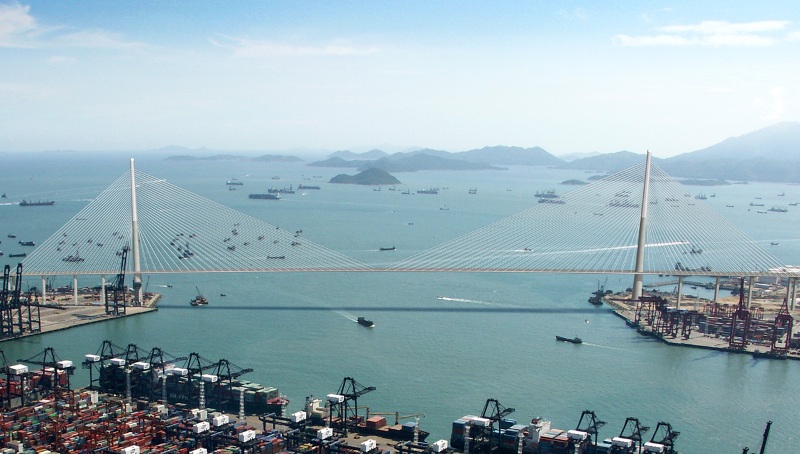
Stonecutters Bridge
Carries Dual 3-lane highway
Crosses Rambler Channel
Locale Tsing Yi Island and Stonecutters Island
Designer Ove Arup and Partners
Design Cable-stayed bridge
Total length 1,596 m (5,240 ft)
Height 298 m (980 ft)
Longest span 1,018 m (3,340 ft)
Clearance below 73.5 m (241 ft)
Beginning date of construction April 2004
Completion date 7 April 2009
Opening date 2009
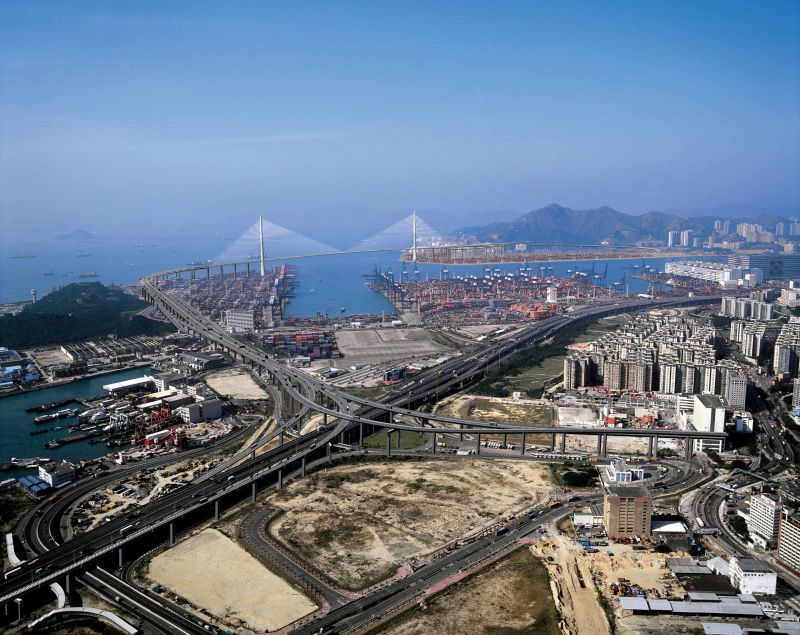
The bridge spans 1.6 km, with 3 lanes in each direction. It is a cable-stayed bridge with two bridge towers, one on Tsing Yi Island and the other on Stonecutters Island.
With a main span of 1,018 m, Stonecutters Bridge has the second-longest cable-stayed span in the world, after the Sutong Bridge.
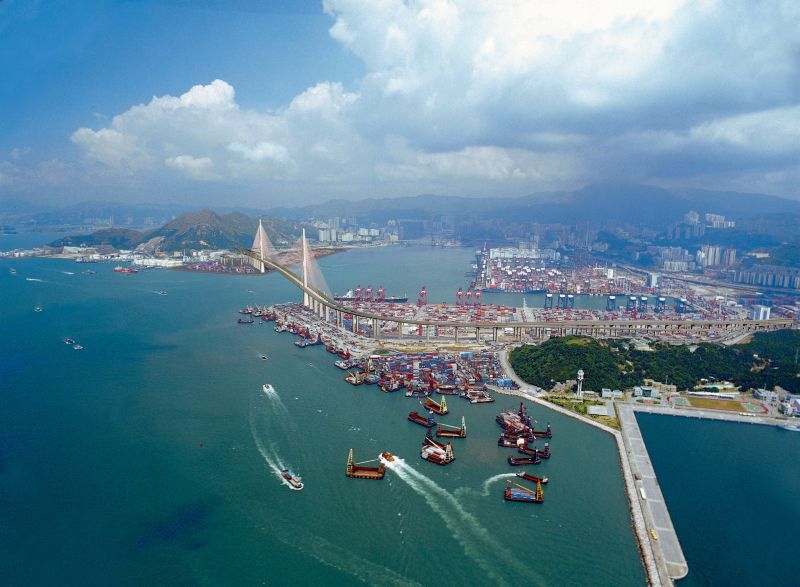
Design
The concept is for a cable-stayed bridge with a twin aerodynamic deck suspended from two 295m-high single pole towers. These towers will have bases measuring 24m x 18m tapering to 7m diameter at the top, and the deck will allow a navigation clearance of 73.5m over the full entrance to the Container Port.
The two towers will be in concrete until level +175m and in composite construction consisting of an inner concrete ring with a stainless steel skin for the top 120m. The original concept had a conventional steel structure above level +175m but Arup found that this configuration would be too lively and lead to unacceptable vibrations of the stay cables. Using a heavier composite section instead of a pure steel structure solved this problem. For reasons of durability and to enhance the appearance, further studies concluded that the tower skin should be fabricated from a duplex stainless steel with a shot peened surface finish. The deck itself will be made of steel in the main span and of concrete in the side spans.
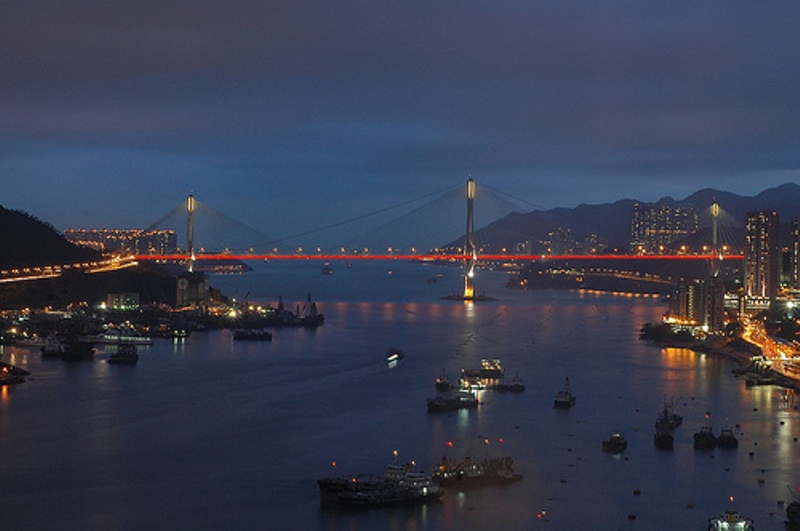
The Hong Kong region is susceptible to very strong typhoon winds, a fact that is being taken into account in the design of the bridge. In October 2002 a 50m mast was erected at the site to measure the speed, direction and turbulence of winds in the area. Readings, which continued until January 2004, were transmitted in real-time to an offsite location for further analysis. In particular, the stability of the 509m-long cantilevers during construction required special consideration in the design.
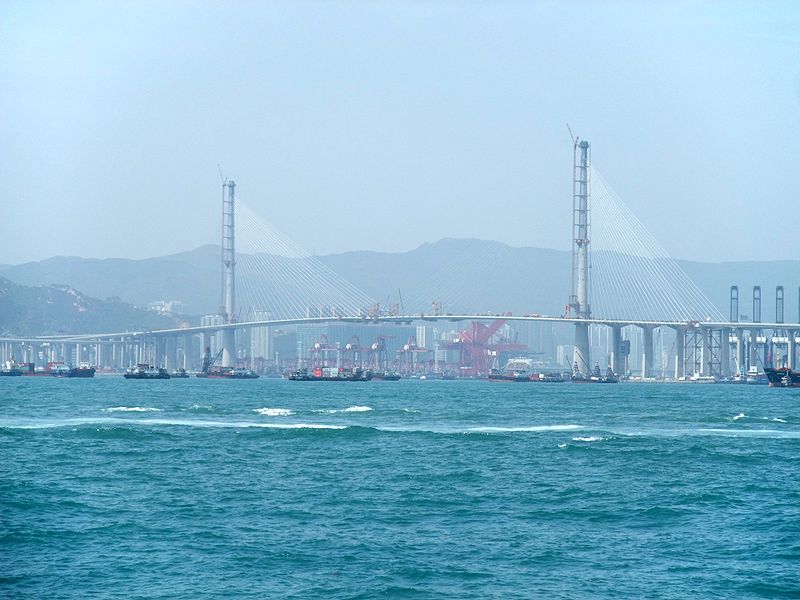
The tower foundations will be located within 10m of the seawall on either side of the Rambler Channel, close to the back-up land next to CT8 and CT9. Their proximity to the channel necessitated ship impact testing and modeling. Geotechnical centrifuge testing was conducted using a 1:200 scale model of a vessel bow section and seawall within a container.